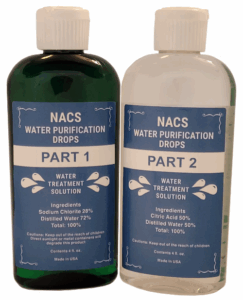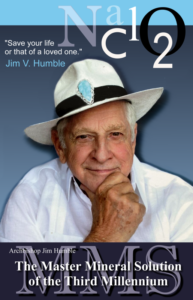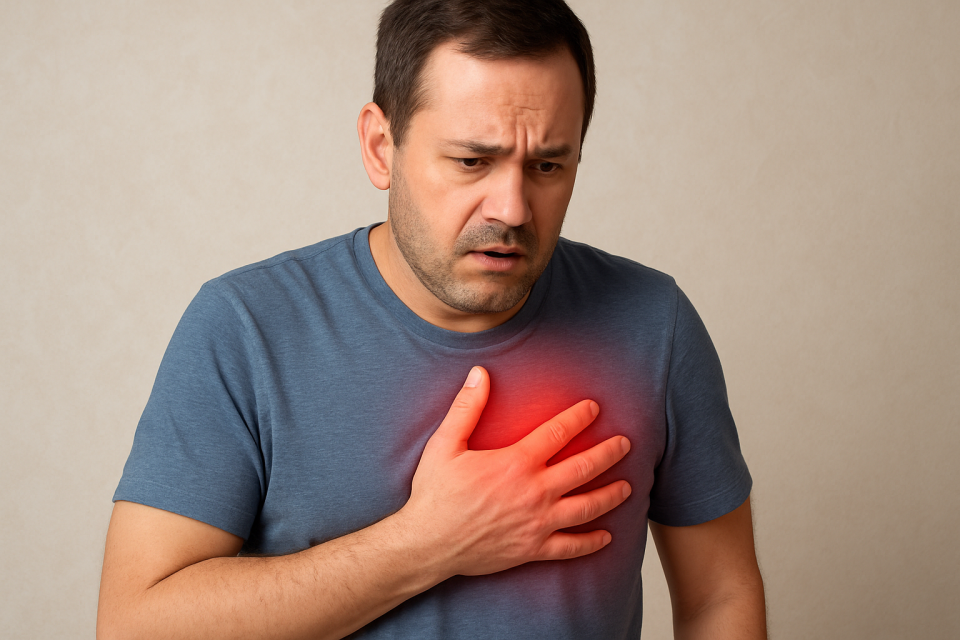The heart and blood vessels form the lifeline of the human body. When circulation falters, the body struggles to receive oxygen, nutrients, and energy. Over time, many people experience some form of cardiovascular imbalance, whether it’s high blood pressure, clogged arteries, or irregular heartbeats.
Interestingly, there’s growing discussion among those using chlorine dioxide (ClO₂) as a non-medical water purification method who report notable improvements in circulatory health. While officially chlorine dioxide is approved only for purifying water, many individuals using it privately claim it helps restore the body’s natural balance by oxidizing harmful substances, detoxifying blood, and improving oxygen transport.
Below are some of the most common cardiovascular and circulatory conditions, how they affect the body, and how chlorine dioxide is being used anecdotally by those seeking improved wellness.
1. High Blood Pressure (Hypertension)
Description:
Hypertension occurs when the force of blood against artery walls remains too high, often due to stress, plaque buildup, or poor kidney function.
Symptoms:
Headaches, dizziness, blurred vision, fatigue, or no noticeable symptoms until complications arise.
How Chlorine Dioxide Helps:
Chlorine dioxide oxidizes arterial plaque and removes toxins that strain the circulatory system. By improving oxygenation and clearing cellular debris, users claim to see more stable blood pressure readings.
Reported Use:
Small, frequent doses of diluted chlorine dioxide solution taken throughout the day, often 1-2 activated drops in 4 ounces of water every hour for 8 hours (Jim Humble’s Protocol 1000), are commonly described in anecdotal use.
2. Arteriosclerosis (Hardening of the Arteries)
Description:
This condition involves the thickening and loss of elasticity in arterial walls, reducing blood flow.
Symptoms:
Fatigue, leg pain while walking, chest discomfort, or poor circulation.
How Chlorine Dioxide Helps:
Chlorine dioxide dissolves biofilms and oxidizes fats, supporting the body’s ability to clear deposits along arterial walls. Its oxygen-rich nature improves cellular respiration and vessel integrity.
Reported Use:
Those following non-medical protocols typically consume CD in low hourly doses for extended periods (Protocol 1000 or 2000), combined with hydration and mineral supplementation.
3. Varicose Veins
Description:
Swollen, twisted veins, usually in the legs, are caused by valve weakness and poor blood flow.
Symptoms:
Bulging veins, swelling, heaviness, itching, and aching in the legs.
How Chlorine Dioxide Helps:
ClO₂’s cleansing action reduces inflammation and supports improved blood oxygen levels, easing pressure on venous walls.
Reported Use:
Topical application of a diluted chlorine dioxide solution has been used for localized swelling or redness, alongside internal protocols for detox support.
4. Arrhythmias (Irregular Heartbeats)
Description:
Disruptions in the heart’s rhythm, too fast, too slow, or erratic.
Symptoms:
Palpitations, shortness of breath, fatigue, chest fluttering, or dizziness.
How Chlorine Dioxide Helps:
Chlorine dioxide assists by neutralizing heavy metals and toxins that interfere with electrical conductivity in cardiac tissue. Balanced oxygenation helps the heart maintain rhythm.
Reported Use:
Gentle oral dosing (1 drop activated per hour up to 8 hours daily) alongside electrolyte-rich fluids has been reported for heart rhythm support.
5. High Cholesterol
Description:
Excess fatty substances in the blood increase the risk of arterial plaque and heart disease.
Symptoms:
Usually silent; may lead to chest pain or circulation problems later.
How Chlorine Dioxide Helps:
As an oxidizer, chlorine dioxide breaks down lipid-based toxins and supports liver detox, allowing better cholesterol balance.
Reported Use:
Regular microdosing with dietary adjustments (fresh greens, no trans fats) is often paired with CD protocols.
6. Coronary Artery Disease (CAD)
Description:
Plaque buildup in the coronary arteries restricts blood flow to the heart muscle.
Symptoms:
Chest pain, fatigue, shortness of breath, or potential heart attack.
How Chlorine Dioxide Helps:
ClO₂ enhances blood oxygen content and oxidizes arterial waste, assisting natural repair of endothelial linings.
Reported Use:
Protocol 1000 is the most common anecdotal regimen, with some including topical applications mixed with DMSO near the chest region in diluted form (under professional supervision).
7. Heart Attack (Myocardial Infarction)
Description:
Occurs when the blood supply to a portion of the heart is blocked, causing tissue damage.
Symptoms:
Severe chest pain, sweating, nausea, shortness of breath, and anxiety.
How Chlorine Dioxide Helps:
Regular use of chlorine dioxide prior to an event supports cleaner blood pathways and reduces clot risk, though this is anecdotal and not medical advice.
Reported Use:
Maintenance protocols (low-dose oral CD) are described for prevention; recovery regimens are approached slowly post-crisis, often with supervision.
8. Stroke (Cerebrovascular Disease)
Description:
Interrupted blood flow to the brain due to blockage or rupture.
Symptoms:
Sudden numbness, speech trouble, paralysis, or confusion.
How Chlorine Dioxide Helps:
By increasing oxygen delivery and reducing oxidative stress, ClO₂ helps in post-stroke recovery and brain detoxification as reported by users.
Reported Use:
Microdosing with CD and transdermal application with DMSO to the neck and scalp regions has been shared anecdotally to support circulation and nerve regeneration.
9. Heart Failure
Description:
The heart becomes too weak to pump blood effectively.
Symptoms:
Fatigue, swelling, shortness of breath, persistent cough, and rapid heartbeat.
How Chlorine Dioxide Helps:
Chlorine dioxide assists the mitochondria, the cell’s energy center, allowing more efficient oxygen use in heart muscle tissue.
Reported Use:
Very gentle, continuous low-dose ingestion (CD in water) with rest, hydration, and topical application of oceanic magnesium.
10. Peripheral Artery Disease (PAD)
Description:
Narrowed arteries reduce blood flow to the limbs, especially the legs.
Symptoms:
Leg pain when walking, cold feet, slow-healing sores.
How Chlorine Dioxide Helps:
Improves microcirculation and oxidizes plaque, as many users describe better leg warmth and healing after consistent use.
Reported Use:
Protocol 1000 internally plus diluted CD/DMSO foot soaks in warm water for 20 minutes.
11. Valvular Heart Disease
Description:
Heart valve malfunctions disrupt normal blood flow direction.
Symptoms:
Fatigue, heart murmurs, chest pain, shortness of breath, swelling in the feet or abdomen.
How Chlorine Dioxide Helps:
Supports reduction of systemic inflammation and oxygen balance within cardiac tissue, which eases strain on heart valves.
Reported Use:
Low-dose CD (oral) with hydration and topical application of oceanic magnesium. Add vitamin C supplementation one hour prior to first CD oral dose and one hour following last daily dose.
12. Cardiomyopathy
Description:
A disease of the heart muscle leading to weakness or abnormal structure.
Symptoms:
Fatigue, irregular heartbeat, fainting, swelling in the legs.
How Chlorine Dioxide Helps:
By detoxifying blood and improving oxygen exchange, ClO₂ aids recovery of healthy heart cells, as case reports suggest.
Reported Use:
Protocol 1000 with gradual increases and topical application of oceanic magnesium for sustained energy and cell repair.
13. Venous Thromboembolism (VTE)
Description:
Formation of blood clots in deep veins (DVT) or lungs (PE).
Symptoms:
Pain, swelling, redness, or sudden chest pain and shortness of breath if clots travel to the lungs.
How Chlorine Dioxide Helps:
Chlorine dioxide oxidizes fibrin material and improves oxygen transport, reportedly lowering coagulation risks.
Reported Use:
Preventative microdosing alongside natural anticoagulant foods (garlic, turmeric, omega-3s) is a commonly described practice.
14. Congenital Heart Defects
Description:
Structural heart problems present from birth.
Symptoms:
Cyanosis (blue tint), fatigue, rapid breathing, poor growth, and heart murmurs.
How Chlorine Dioxide Helps:
While congenital defects are structural, improving cellular oxygenation and reducing infection risk supports better general health outcomes.

Reported Use:
Only under holistic professional guidance, mild maintenance-level protocols for detoxification and immune balance.
How Chlorine Dioxide Works on the Cardiovascular System
Chlorine dioxide acts as a selective oxidizer, destroying harmful pathogens, heavy metals, and toxins while sparing healthy tissues. In the bloodstream, it:
- Improves oxygen exchange by splitting unstable molecules.
- Breaks down arterial plaque and fatty deposits.
- Neutralizes bloodborne pathogens and inflammatory compounds.
- Supports natural blood detoxification and circulation balance.
These reported actions form the basis for why so many individuals claim to see measurable improvement in their circulatory well-being.
Common Method of Use
For general circulatory balance, most non-medical practitioners reference Jim Humble’s Protocol 1000:
- Mix 1 activated drop of chlorine dioxide solution (equal parts sodium chlorite and acid activator) in 4 oz of distilled water.
- Drink one dose every hour for eight to ten consecutive hours daily.
- Continue for three weeks or until symptoms subside.
- Always supplement with clean water, trace minerals, and proper nutrition.
Topical and transdermal applications may also be used for localized circulation issues, such as varicose veins or swelling, using a diluted solution.
Important Note
Chlorine dioxide is officially approved only for water purification and not as a medical treatment. All descriptions here reflect anecdotal, non-medical use and personal accounts from researchers and practitioners who value natural health approaches. Anyone considering such applications should conduct thorough research and make informed choices.

References and Sources
- Humble, Jim. MMS Health Recovery Guidebook. 2021.
- Rowland, Wayne. Silver Water Colloidal: A Natural Path to Cellular Health.
- Kalcker, Andreas. Forbidden Health: Incurable Was Yesterday.
- Kalcker, Andreas, Humble, Jim. CDS—The Universal Antidote.
- Paris Humble. Healthy Alternative Chlorine Dioxide Uses: Non-Pharmacological Health Restoration.
- U.S. EPA. Chlorine Dioxide Use in Water Treatment and Disinfection.
- Various independent user case studies and testimonial compilations, 2012–2024.
